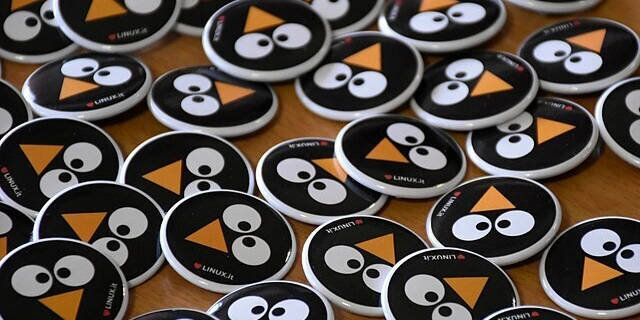Mark Zuckerberg Wants Developers to Build Smarter, With Meta AI
Mark Zuckerberg is no stranger to reshaping the digital landscape. From connecting billions through Facebook to pioneering virtual worlds in the metaverse, his vision has always been bold. Now, he’s calling on developers around the world to step into a new era—one that’s smarter, faster, and fundamentally transformed by artificial intelligence. At the heart of this evolution is Meta AI—a suite of powerful tools, open-source models, and developer-ready APIs designed to empower builders with next-generation capabilities. Zuckerberg’s message is clear: AI is no longer optional—it’s essential. Meta’s AI Strategy: Developer-Centric by Design Meta isn’t just integrating AI into its products—it’s rebuilding its developer ecosystem around it. The company is facilitating access to advanced AI models such as Llama, providing developers with tools previously exclusive to Big Tech labs. Meta is adopting an open-source approach, in contrast to many AI tools that rely on expensive APIs or closed-source licenses. The Llama models, especially with the latest Llama 3 rollout, are designed to give developers flexibility: customize, fine-tune, and deploy them for use cases across industries—from eCommerce and education to healthcare and logistics. In short, Meta is handing developers a new kind of superpower. What Meta AI Offers Developers Whether you’re a startup founder, a solo app creator, or a backend engineer in a global enterprise, Meta AI offers resources that can supercharge your work: Llama 3 and the Llama API Meta’s flagship open-source language model is now more accessible than ever. With the Llama API, developers can quickly embed advanced natural language capabilities into their apps without building an entire AI pipeline from scratch. Meta AI Integration Across Platforms Meta AI isn’t just theoretical—it’s embedded in products people use every day: Facebook, Instagram, Messenger, and WhatsApp. Developers can now explore how these intelligent features work, replicate them, or even build complementary tools. Infra at Scale Zuckerberg knows that the best AI tools are nothing without robust infrastructure. That’s why Meta plans to invest over $60 billion in AI infrastructure by 2025. Such investment means more compute, faster response times, and scalable access for developers who want to build without compromise. Building Responsibly: Safety, Trust, and Control With AI’s power comes responsibility. Meta isn’t ignoring the challenges of safety, misinformation, or deepfake misuse. Instead, it’s building systems with guardrails, transparency, and user trust in mind. From model alignment and content moderation to tools that help flag AI-generated material, Meta is working to ensure that developers not only build smarter but safer too. Zuckerberg emphasized this in recent public appearances: developers must have the freedom to build but also the tools to ensure what they build is ethical, inclusive, and socially responsible. Why This Matters The timing couldn’t be more important. AI is not a futuristic concept anymore—it’s shaping how users engage, how businesses operate, and how developers innovate. Mark Zuckerberg’s push for a more open, collaborative AI future isn’t just about Meta. It’s about creating a foundation where developers can thrive, especially in an environment where access to advanced AI has often been limited to a select few. By open-sourcing its models and investing deeply in infrastructure, Meta is saying, We’re in this together. Let’s build the next wave of technology—smarter, faster, and more open. Final Thoughts: Smarter Tools, Bolder Builders Zuckerberg’s vision is bold, but it’s also refreshingly grounded: give developers the best tools, and they’ll build the future. With Meta AI, the tools are in place, the models are ready, and the infrastructure is expanding. For developers ready to innovate, now is the time. Building smarter isn’t just an advantage in a world moving this quickly, it’s the only path forward. Source: Ingramone

Mark Zuckerberg is no stranger to reshaping the digital landscape. From connecting billions through Facebook to pioneering virtual worlds in the metaverse, his vision has always been bold. Now, he’s calling on developers around the world to step into a new era—one that’s smarter, faster, and fundamentally transformed by artificial intelligence.
At the heart of this evolution is Meta AI—a suite of powerful tools, open-source models, and developer-ready APIs designed to empower builders with next-generation capabilities. Zuckerberg’s message is clear: AI is no longer optional—it’s essential.
Meta’s AI Strategy: Developer-Centric by Design
Meta isn’t just integrating AI into its products—it’s rebuilding its developer ecosystem around it. The company is facilitating access to advanced AI models such as Llama, providing developers with tools previously exclusive to Big Tech labs.
Meta is adopting an open-source approach, in contrast to many AI tools that rely on expensive APIs or closed-source licenses. The Llama models, especially with the latest Llama 3 rollout, are designed to give developers flexibility: customize, fine-tune, and deploy them for use cases across industries—from eCommerce and education to healthcare and logistics.
In short, Meta is handing developers a new kind of superpower.
What Meta AI Offers Developers
Whether you’re a startup founder, a solo app creator, or a backend engineer in a global enterprise, Meta AI offers resources that can supercharge your work:
Llama 3 and the Llama API
Meta’s flagship open-source language model is now more accessible than ever. With the Llama API, developers can quickly embed advanced natural language capabilities into their apps without building an entire AI pipeline from scratch.Meta AI Integration Across Platforms
Meta AI isn’t just theoretical—it’s embedded in products people use every day: Facebook, Instagram, Messenger, and WhatsApp. Developers can now explore how these intelligent features work, replicate them, or even build complementary tools.Infra at Scale
Zuckerberg knows that the best AI tools are nothing without robust infrastructure. That’s why Meta plans to invest over $60 billion in AI infrastructure by 2025. Such investment means more compute, faster response times, and scalable access for developers who want to build without compromise.
Building Responsibly: Safety, Trust, and Control
With AI’s power comes responsibility. Meta isn’t ignoring the challenges of safety, misinformation, or deepfake misuse. Instead, it’s building systems with guardrails, transparency, and user trust in mind.
From model alignment and content moderation to tools that help flag AI-generated material, Meta is working to ensure that developers not only build smarter but safer too.
Zuckerberg emphasized this in recent public appearances: developers must have the freedom to build but also the tools to ensure what they build is ethical, inclusive, and socially responsible.
Why This Matters
The timing couldn’t be more important. AI is not a futuristic concept anymore—it’s shaping how users engage, how businesses operate, and how developers innovate.
Mark Zuckerberg’s push for a more open, collaborative AI future isn’t just about Meta. It’s about creating a foundation where developers can thrive, especially in an environment where access to advanced AI has often been limited to a select few.
By open-sourcing its models and investing deeply in infrastructure, Meta is saying, We’re in this together. Let’s build the next wave of technology—smarter, faster, and more open.
Final Thoughts: Smarter Tools, Bolder Builders
Zuckerberg’s vision is bold, but it’s also refreshingly grounded: give developers the best tools, and they’ll build the future. With Meta AI, the tools are in place, the models are ready, and the infrastructure is expanding.
For developers ready to innovate, now is the time.
Building smarter isn’t just an advantage in a world moving this quickly, it’s the only path forward.
Source: Ingramone


















































































